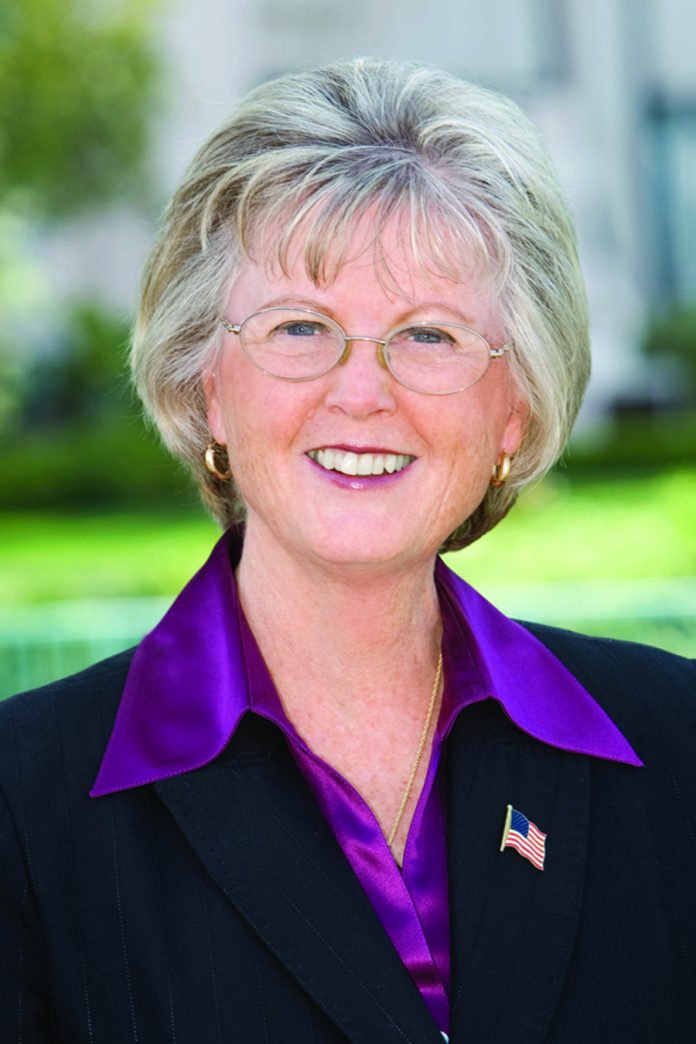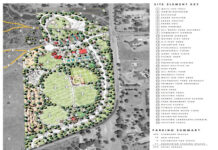San Diego County Board of Supervisors chairwoman Dianne Jacob gave the State of the County address Feb. 6 and focused on housing, public safety, and energy.
“This spot right here, 1600 Pacific Highway, is a long way from 1,600 Pennsylvania Avenue,” Jacob said a day after the national State of the Union address. “Here it’s not about red versus blue. It’s about nuts and bolts governing. Here we can turn up our civic sleeves and actually do our jobs and put people before politics.”
The contrast between the federal government and the non-partisan county government includes the early 1990s when the county was on the brink of declaring bankruptcy. Jacob, who was first elected to the Board of Supervisors in 1992 and had previously been on the staff of Supervisor George Bailey, noted that a partial shutdown for budget reasons forced county workers to take time off without pay. “It took a new crop of supervisors and managers to turn things around, and we did, and today the state of the county is much better because we’re no longer debating where to cut. We’re looking at where to spend. And we are. More on services. More on facilities. More on critical programs,” Jacob said.
That doesn’t mean that the county in 2019 is without challenges.
“And right now two of them are on a collision course,” Jacob said. “We need affordable housing. And we need to better protect the region from our greatest natural threat, wildfire. But how do we allow more housing in the unincorporated area while also doing all we can to protect people and property?”
Approximately 60,000 homes in the unincorporated county are on land considered to be at high risk for a wildfire. “We’re facing a conflict between shelter and safety, and we must find some balance in this battle,” Jacob said.
Two years ago the county created a $25 million trust fund to help finance homes for the homeless and for seniors and veterans at risk of becoming homeless. Two of the projects have broken ground, and funding will allow for a total of 453 homes. “It doesn’t sound like a lot, but it’s a start,” Jacob said.
Jacob noted that in January the county waived permit fees for accessory dwelling units, which is expected to reduce the cost for each dwelling by approximately $15,000. “This is a pretty good incentive to get shovels in the ground,” Jacob said.
Minimizing the number of homes near wildland does not prevent wildfires from spreading. Since the October 2003 fires the county has spent more than half a billion dollars on fire protection and emergency medical services. “We’re talking about new engines, new stations, new technology, and a bigger fleet of aircraft. We’re talking about a more unified and better trained firefighting force,” Jacob said. “Because we know how bad it can get we have brought more muscle to the fight.”
Jacob and Supervisor Jim Desmond, the two county supervisors with the greatest unincorporated territory in their districts, plan to bring to the board a proposal to offer grants or other incentives to encourage existing homeowners in high-risk areas to install safer walls, vents, and other fire-resistant materials. Jacob also called for increased defensible space inspections, expanded wood chipping programs, and a strengthened Fire Safe Council network. She emphasized teaming with state and federal agencies on a joint plan for controlled burns and fuel breaks including streamlined environmental review and called for increased technology and mapping to protect high-risk communities.
Jacob added that the county is working with the city of San Diego and other agencies to place dispatchers in the same building. “This would not only save money, but it will improve response times, and that means saving lives,” she said.
“All of these measures will make existing homes safer and help us prepare for new homes and communities. But we can’t stop there,” Jacob said. “The fact is, like it or not, San Diego County remains one Santa Ana wind away from a disaster. New homes and communities must be built to give people and property the greatest chance of survival.”
Jacob noted that when fire code standards are next upgraded the county will seek a tougher set of criteria for development in high-risk areas of unincorporated San Diego County. Additional housing on existing lots might be accomplished by additional financial incentives for accessory dwelling units, Jacob proposed. Encinitas already has free preapproved permit-ready building plans for a secondary dwelling unit, saving homeowners up to $18,000 per unit, and Jacob suggested that the county consider such streamlining.
“We want affordable housing, we need affordable housing, and we are wired for it here in the county,” Jacob said.
Additional housing will also help address homelessness and the long-term needs of those dealing with substance abuse or other behavioral issues. The county currently has nearly 1,200 short-term and long-term beds for those in crisis. “Just adding more beds is not the solution,” Jacob said. “We need to focus on the individual, not the programs, and come up with a coordinated system of care.”
Jacob cited Sheriff’s Department figures that at least 100 people with behavioral health problems are in jail more than 14 times a year, which equates to nearly 1,500 arrests. “These people don’t belong behind bars. These people need treatment,” she said. “Instead of winding up in jail, more folks would get the help they need where they need it.”
The county recently increased the amount of money available for intensive residential and outpatient treatment from $54 million to more than $150 million. “It’s not just about more money. We are radically transforming the delivery of care, ending a limited and fragmented structure. We’re now working directly with emergency rooms to connect patients with addiction services,” Jacob said.
Jacob noted that approximately one-third of San Diego County’s homeless are seniors. “Housing is not the only big challenge facing our oldest residents,” she said.
Alzheimer’s Disease is the third leading cause of death in San Diego County, behind heart disease and cancer. In 2014 the Board of Supervisors initiated The Alzheimer’s Project which brought together government, scientific, health care, and non-profit organization leaders. Jacob announced a new county program which will provide families with matching funds to cover the expense of hiring caregivers to give family members an occasional break; the county and family will each pay half of the cost and the county will have $1 million available for the program.
Jacob also noted that the county plans to expand to a countywide basis the Alzheimer’s Response Team which brings together first responders, social workers, and others to ensure that those with Alzheimer’s receive the right type of help in an emergency. The program is currently being utilized in East County.












